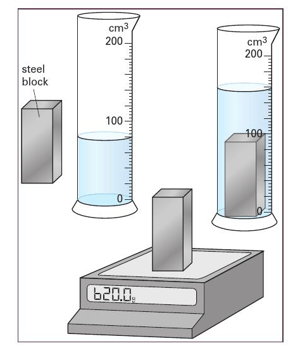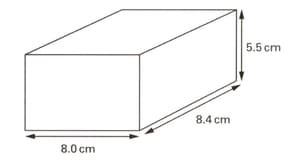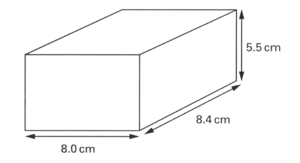A student measures the density of a piece of steel. She uses the method of displacement to find its volume. Her measurements are shown in the diagram. Calculate the volume of the steel and its density.



Important Questions on Making Measurements
A pendulum is timed, first for swings and then for swings.
time for swings
time for swings
Calculate the average time per swings in each case, The answers are slightly different. Suggest some possible experimental reason for this.
To find the the density of a substance, we need to measure the mass and volume of a sample of the substance. Write the equation that links there three quantities.
To find the density of a substance, we need to measure the mass and volume of a sample of the substance. The units of density depend on the units we use when measuring mass and volume. Copy and complete the table to show the correct units for density.
| Unit of mass | Unit of volume | Unit of density |
An ice cube has the following dimensions.
Its mass is . Calculate its volume.
An ice cube has the dimension.
Its mass is . Calculate its density.
A student is measuring the density of a liquid. He places a measuring cylinder on a balance and record its mass. He then pours liquid into the cylinder and records the new reading on the balance. He also records the volume of the liquid.
Mass of empty cylinder
Mass of cylinderliquid
Volume of liquid
Using the results shown, calculate the density of the liquid.


